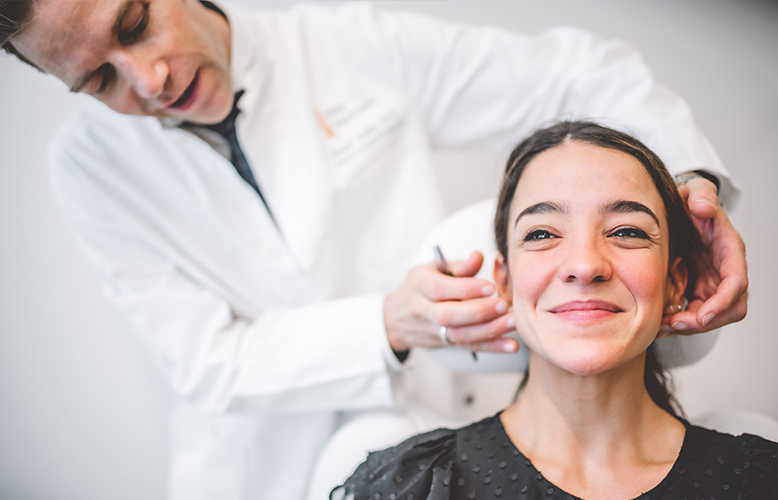FAQs about facial rejuvenation
You can find a selection of the most frequently asked questions here:
What are the facial rejuvenation treatment possibilities?
There are various commonly-used treatment methods for facelifts. The SMAS lift describes a lifting method in which not only the skin of the face is lifted but also the tissue below. This procedure normally lasts approx. 3-4 hours and is the most popular option for facelifts.
What are the risks of a facelift?
A facelift in Bonn is normally performed under general anaesthetic during an operation. The procedure is subject to the normal risk factors of an operation. With the correct advice, professional treatment and by maintaining the highest medical standards as well as comprehensive instructions regarding the correct post-operative care however, all risk factors are minimised.
Is the result of facial rejuvenation permanent?
Long-term satisfying results can be achieved by operative facial rejuvenation. This is a somewhat more elaborate procedure which has a major and long-term effect. The patient acquires a long-term younger look and therefore an overall improved quality of life.
What do you need to consider either before or after facial rejuvenation?
A facelift is usually an operative procedure carried out under general anaesthetic. Before the treatment in Bonn, you should avoid blood-thinning medication, nicotine and alcohol. After the treatment, you should plan a recuperation period. The correct wound care is also essential for a satisfactory result. Dr med. Daniel Sattler will discuss the exact pre-operative and post-operative care measures to be taken in a personal consultation with you in Bonn.
What costs are involved in a facial rejuvenation in Bonn?
A facial rejuvenation in Bonn includes various treatment possibilities, meaning that it is not possible to quote a specific price. The procedure is tailored to the individual needs of the patient. Dr med. Daniel Sattler will discuss the options, procedure and the costs that are incurred with you in a personal consultation in Bonn.



